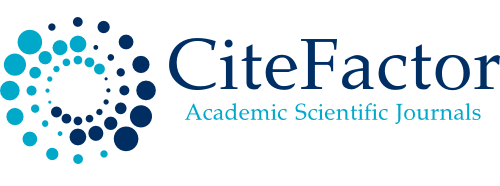The Effect of Talent Management on Employee Performance at Bank BTN Bandung
DOI:
https://doi.org/10.61841/z15qfe81Keywords:
Talent Management,, Employee PerformanceAbstract
In this study there are two variables, namely variable X (talent management) and Y variable (performance). This research was conducted to determine the effect of Talent Management on Employee Performance at Bank BTN Bandung. The method used in this study is a descriptive analysis method to identify how the influence of talent management and how much employee performance at Bank BTN Bandung. While the verification of analysis to identify problems is how much influence Talent Management has on the Performance of Bank BTN Employees. This research was conducted at the Bank BTN Bandung office. This research was conducted using a sample based on Purposive Sampling. The hypothesis of this research is Talent Management influences Employee Performance at Bank BTN Bandung. To measure the effect of these variables using Simple Linear Regression with the help of the application software system SPSS 21.0. Based on the results of data analysis using statistical methods, it was concluded that there was a significant influence between Talent Management on Performance, this was based on regression analysis with the equation Y = 3,588 + 0.293X. In correlation there is a fairly strong or moderate relationship between Talent Management and Bank Employee Performance with a value of 0.543 Furthermore, it is obtained the coefficient of determination (KD) that Talent Management affects Performance with a value of 29.5%. Hypothesis testing of this study in which the tcount of 4.927 is greater than the value of t table 1.670 Then H1 is accepted and H0 is rejected, which means that Talent Management influences Employee Performance.
Downloads
References
1. Alziari, L. (2017). A chief HR officer’s perspective on talent management.
2. Journal of Organizational Effectiveness: People and Performance, 4(4), 379–383.
3. Anand, P. (2011). Talent development and strategy at telecom major Bharti Airtel. Strategic HR Review, 10(6), 25–30.
4. Achour, M., Binti Abdul Khalil, S., Binti Ahmad, B., Mohd Nor, M. R., & Zulkifli Bin Mohd Yusoff, M. Y. (2017). Management and supervisory support as a moderator of work–family demands and women’s well- being. Humanomics, 33(3), 335–356.
5. Armstrong, Michael. (2010). Managing People: A Practical Guide for Line Managers (Bern Hidayat, Translator). Jakarta: Bhuana Popular Science.
6. Bernadin, H. Jhon & Joyce E. A. Russel. (2001). Human Resource Management. Singapore: McGraw Hill Inc.
7. Capelli, Peter. (2009). Talent on Demand. United States of America: Harvard Business School Publishing
8. Capelli, Peter. (2009). Talent on Demand (Wendra & Triana Rafelina, Translator). Jakarta: PPM management
9. Davis, Tony, et al. (2009). Talent Assessment Measuring, Assessing, and Selecting the Best People in the Company (Abdul Rosyid, Translator). Jakarta: PPM Management.
10. Ellehuus, C. (2012), "Transforming business leaders into talent champions", Strategic HR Review, Vol. 11 No. 2, pp. 84-89.
11. Glastra, F. and Meerman, M. (2012), "Developing ethnic talent in the Dutch national tax administration: a case study", European Journal of Training and Development, Vol. 36 No. 1, pp. 105-124.
12. Greitens, T. and Ernita Joaquin, M. (2012), "Perceptions of performance in US financial regulatory programs", International Journal of Public Sector Management, Vol. 25 No. 6/7, pp. 444-454.
13. Kaswan 2012. Human Resource Management: For Competitive Advantage of Organizations (First Edition). Yogyakarta: Graha Science.
14. Nkereuwem, E. (1996), "Job performance attributions and career advancement prospects for women in the academic libraries", Librarian Career Development, Vol. 4 No. 1, pp. 18-24.
15. M. Iqbal Hasan. 2001. Main Material Statistics I (Descriptive Statistics) Earth Literacy. Jakarta.
16. Othman, R. and Sumardi, W. (2014), "Talent management at Steelcase Manufacturing, Malaysia: managing high performance", Emerald Emerging Markets Case Studies, Vol. 4 No. 6.
17. Pella, Darmin Ahmad & Afifah Inayati. (2011). Talent management Developing HR to Achieve Prime Growth and Performance. Jakarta: PT. Gramedia
18. Rivai Veihtza. (2013). Resource Management for Companies: from Theory to Practice, Jakarta: Btnaman Pressindi).
19. Simajuntak, Payaman J. (2011). Management and Performance Evaluation. Jakarta: University of Indonesia Faculty of Economics Publisher Institute.
20. Sole, F. (2009), "A management model and factors driving performance in public organizations", Measuring Business Excellence, Vol. 13 No. 4, pp. 3-11.
21. Sugiyono (2012). Business Research Methods. Bandung: Alfabeta
22. Tafti, M. M., Mahmoudsalehi, M., & Amiri, M. (2017). Critical success factors, challenges and obstacles in talent management. Industrial and Commercial Training, 49(1), 15–21.
23. Thorpe, R., & Beasley, T. (2004). The characteristics of performance management research. International Journal of Productivity and Performance Management, 53(4), 334–344.
24. Timpe, A. Dale. (2002). Human Resource Management Series: Performance (Sofyan Cikmat, Translator). Jakarta: PT. Elex Media Komputindo.
Downloads
Published
Issue
Section
License

This work is licensed under a Creative Commons Attribution 4.0 International License.
You are free to:
- Share — copy and redistribute the material in any medium or format for any purpose, even commercially.
- Adapt — remix, transform, and build upon the material for any purpose, even commercially.
- The licensor cannot revoke these freedoms as long as you follow the license terms.
Under the following terms:
- Attribution — You must give appropriate credit , provide a link to the license, and indicate if changes were made . You may do so in any reasonable manner, but not in any way that suggests the licensor endorses you or your use.
- No additional restrictions — You may not apply legal terms or technological measures that legally restrict others from doing anything the license permits.
Notices:
You do not have to comply with the license for elements of the material in the public domain or where your use is permitted by an applicable exception or limitation .
No warranties are given. The license may not give you all of the permissions necessary for your intended use. For example, other rights such as publicity, privacy, or moral rights may limit how you use the material.









